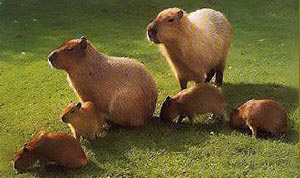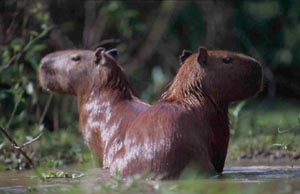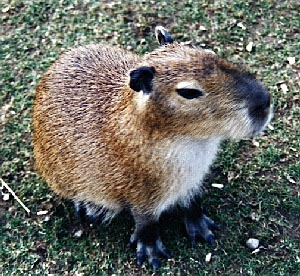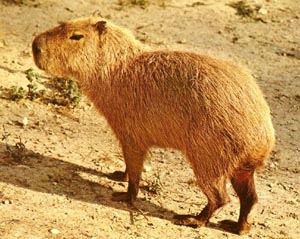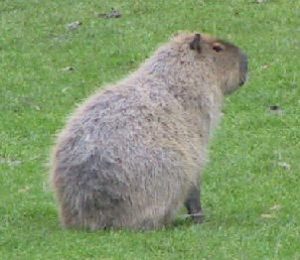Teica
From World of Entorais Wiki
Revision as of 02:10, 20 April 2023 by Sebastian Romu (talk | contribs) (Text replacement - "Sub-Species" to "Notable Sub-Species")
About
- Teica are used as a primary livestock, and its wooly hair for use in the manufacture of clothing.
- Common Names
- Teica (Waejir), Tëka (Kythus)
Description
- Classification
- Mammal
- Size
- Adults 35 – 66 kilograms (70-130 pounds), 0.75 metres (2 feet 6 inches) at the shoulder, and 1.2 metre (3 feet 6 inches) body length.
- Appearance
- Stocky quadrupeds with short tails, dark coloured legs, and a brown coat of medium hair. Large heads, with small rounded ears.
- Sexual dimorphism
- No notable difference between the sexes.
- Variance
- Wild teica will still have the goring tusks used for uprooting edible roots, and other food. These tusks are pulled in young domestics to prevent injury to handlers.
Ecology
- Habitat
- There are several sub-species of Teica each suited to their preferred biomes. In general they prefer woody or grassy regions where they can browse a variety of foodstuff.
- Diet
- Herbivores. Roots, mushrooms, nuts, grasses and other plant material.
Behaviour
- Social grouping
- Small family herds up to a dozen members. Larger herds in domesticated varieties.
- Temperament
- Wary.
- Intelligence
- Animal.
- Reproduction
- Mating occurs in the autumn with females live birthing up to 4 young in the spring, which grow to adult size and sexual maturity by their second year.
Notable Sub-Species
The sub-species of teica vary primarily in colouration and quality of their hair. Most are the same size and follwo the same patterns of behaviour.
Common Teica
- Domesticated variety raised primarily as food stock. They tend to the brown haired, black legged and faced colours typical of the species.
Desert Teica
- Light brown with sandy tones on the legs and belly. A leaner bodied species well adapted to arid climates.
Marsh Teica
- Dark brown nearly black all over, this wild species is common in marshlands and boggier swamps. They have webbed toes making them passable swimmers.
Red Teica
- Red-brown in colour, with a lighter belly and neck. This species tends to hilly and flat lands of a temperature clime.
Woods Teica
- Brown with black face and legs, and a white or cream coloured neck and belly.
Wooly Teica
- Very coarse wooly coat of grey brown colour, with dark legs and face typical of their shorter haired cousins. This species is domesticated as a textile producer. Their hair is sheared, combed and collected for the production of woollen goods.
Domestication
- General
- A few sub-species of teica are kept in large domestic herds, primarily as food stock and textile producers.
- Resources
- Teica provide Meat, milk, leather and textile fibres.
